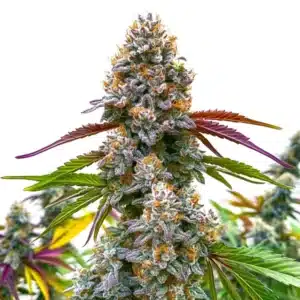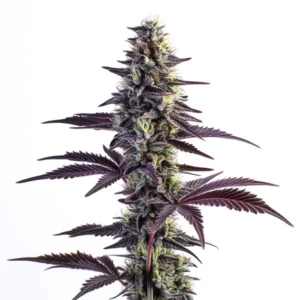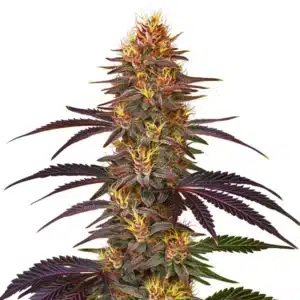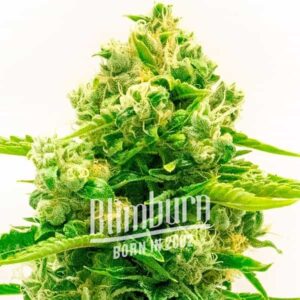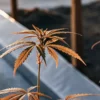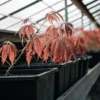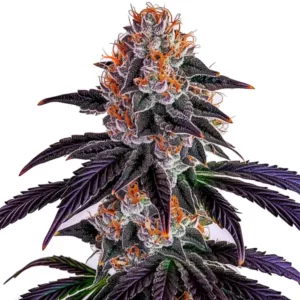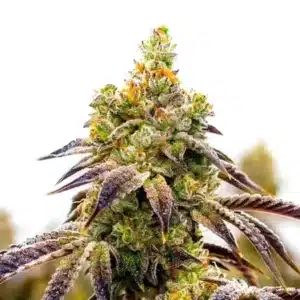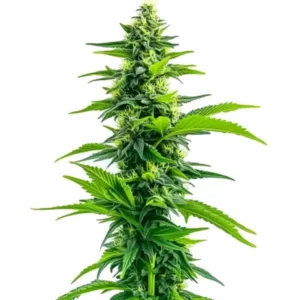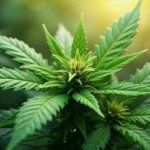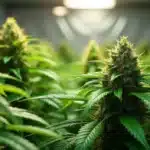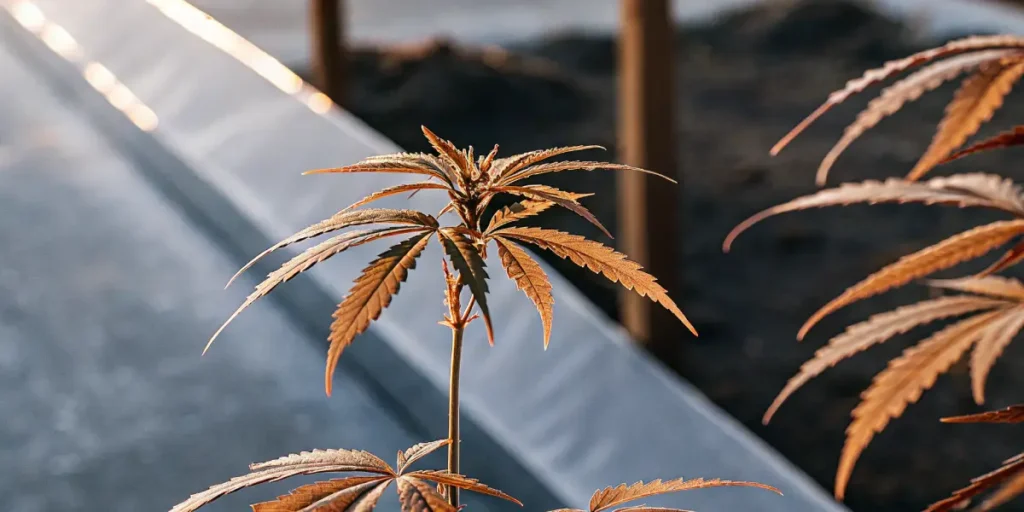
Abscisic Acid Signaling in Cannabis Under Drought
When it comes to growing cannabis, water is crucial. But what happens when drought strikes? Here’s where abscisic acid signaling in cannabis under drought becomes essential. This natural plant hormone helps cannabis adapt to water scarcity, ensuring survival and quality yield. For both new buyers and seasoned cultivators, grasping this concept can make a big difference.
Abscisic acid, often abbreviated as ABA, plays a significant role in how cannabis responds to drought. When water levels drop, ABA levels rise, signaling the plant to conserve moisture. This is vital for maintaining plant health and ensuring that your cannabis strains like Critical Daddy Purple from Blimburn Seeds can thrive even in challenging conditions.
Recommended Strains
Critical Daddy Purple
-
THC: 19%
-
Type of seed: Feminized
-
Phenotype: 50% Sativa / 50% Indica
-
Flavor: Fruity, Woody
-
Day to flower: 8 - 10 weeks
Blue Dream
-
THC: 17% - 24%
-
Type of seed: Feminized
-
Phenotype: 50% Sativa / 50% Indica
-
Flavor: Berry, Blueberry, Mango, Sweet
-
Day to flower: 8 - 10 weeks
The molecular mechanisms of abscisic acid in cannabis under drought involve complex signaling pathways. These pathways trigger a series of responses, from closing stomata to altering growth patterns, all aimed at reducing water loss. This intricate dance is what makes cannabis resilient, even when the rain clouds disappear.
Abscisic Acid Role in Cannabis Drought Response
In the face of drought, cannabis plants rely on abscisic acid to guide their survival strategies. When soil moisture levels drop, ABA increases, prompting the plant to adjust its physiology. This response is critical for maintaining the plant’s internal water balance and overall health.
For example, Blue Dream cannabis strain from Blimburn Seeds shows remarkable drought tolerance due to effective ABA signaling. As ABA levels rise, the plant conserves water by closing its stomata, the tiny pores on leaves. This not only reduces water loss but also helps sustain vital functions during dry spells.
Abscisic acid role in cannabis drought response extends beyond just water conservation. It also involves modifying the plant’s root architecture to maximize water uptake from the soil. By stimulating deeper root growth, ABA allows cannabis plants to access moisture from lower soil layers, enhancing their drought endurance.
Furthermore, abscisic acid signaling in cannabis under drought can trigger the production of osmoprotectants, compounds that help maintain cell turgor and function during water deficit conditions. This biochemical adjustment aids in preserving cellular integrity and reducing the likelihood of drought-induced damage.
Impact of Abscisic Acid on Cannabis Drought Tolerance
The impact of abscisic acid on cannabis drought tolerance is significant. By influencing the plant’s water-saving mechanisms, ABA ensures that cannabis can withstand prolonged periods of dryness. This hormone activates a series of genetic expressions that enhance the plant’s ability to survive with less water.
Consider growing the Gorilla Glue 4 strain from Blimburn Seeds. This strain benefits from ABA’s signaling pathways, allowing it to endure drought conditions better than others. The hormone’s ability to modulate growth and development under stress is key to producing a resilient plant.
In addition to its role in water conservation, the impact of abscisic acid on cannabis drought tolerance includes the reinforcement of the plant’s defense mechanisms. ABA enhances the synthesis of protective proteins and antioxidants that mitigate oxidative stress caused by drought conditions.
Moreover, abscisic acid signaling in cannabis under drought can influence the expression of genes associated with stress resistance. By activating these genetic pathways, ABA equips cannabis plants with the tools needed to not only survive drought but also maintain their biochemical processes at a functional level.
Promos & Deals
Abscisic Acid Signaling Pathways in Drought-Stressed Cannabis
In drought-stressed cannabis, abscisic acid signaling pathways are crucial. These pathways involve a series of signals that communicate from the roots to the leaves, triggering responses that help the plant cope with limited water availability. It’s a sophisticated network that ensures survival.
Knowing these pathways can empower growers to optimize their cultivation techniques. By recognizing the signs of ABA activity, such as leaf curling or reduced growth rate, cultivators can adjust water schedules and nutrient supply to support the plant’s natural defenses.
Abscisic acid signaling pathways in drought-stressed cannabis encompass a range of physiological adjustments. These include changes in leaf orientation and reduced transpiration rates, both of which contribute to the overall water conservation strategy of the plant.
Additionally, the molecular mechanisms of abscisic acid in cannabis under drought involve the regulation of ion channels in plant cells. This regulation aids in maintaining cellular homeostasis, allowing the plant to continue its metabolic functions even under water-deficit conditions.
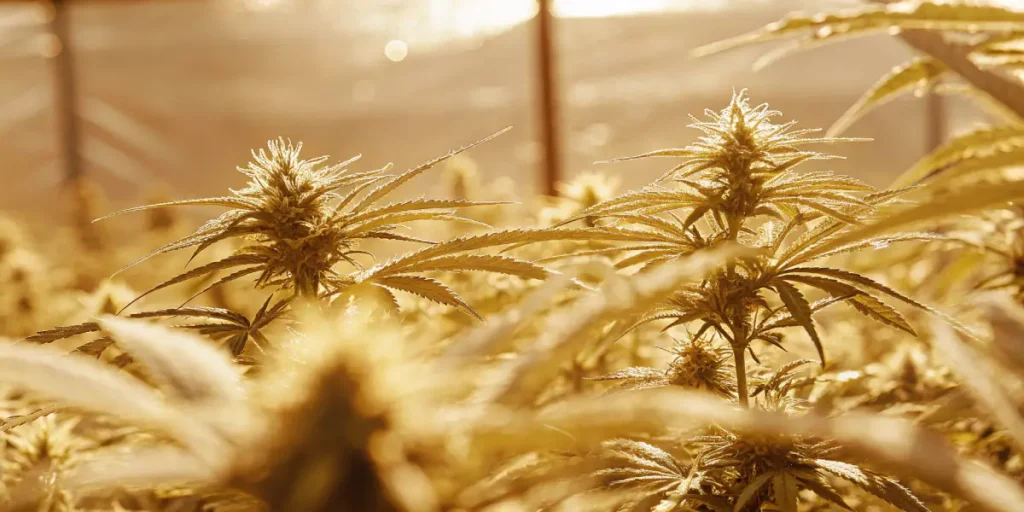
Molecular Mechanisms of Abscisic Acid in Cannabis Under Drought
The molecular mechanisms of abscisic acid in cannabis under drought are fascinating. They involve changes at the cellular level that optimize water use and protect the plant’s vital processes. By altering gene expression, ABA promotes the synthesis of proteins that enhance drought tolerance.
For instance, when growing strains like Blue Dream, it’s crucial to understand how ABA influences these processes. It helps the plant allocate resources effectively, ensuring that energy is directed towards maintaining essential functions rather than growth.
Furthermore, the molecular mechanisms of abscisic acid in cannabis under drought involve the activation of signaling cascades that enhance the plant’s stress perception and reaction. These cascades enable a rapid response to water scarcity, reducing the time taken for the plant to adapt.
At a deeper level, abscisic acid signaling in cannabis under drought can also lead to epigenetic modifications. These modifications may provide a memory of drought conditions, allowing plants to respond more efficiently to future water stress scenarios.
Practical Applications for Growers
For practical applications, growers can focus on enhancing abscisic acid signaling in cannabis under drought. This involves selecting strains known for their drought resilience, such as Critical Daddy Purple, and providing optimal growing conditions that support ABA activity.
Techniques like controlled irrigation and soil moisture monitoring are vital. By ensuring that plants receive just the right amount of water, growers can encourage natural ABA responses without overwhelming the plant. This balance is key to cultivating healthy, resilient cannabis crops.
In addition to strain selection and irrigation management, understanding cannabis abscisic acid drought stress adaptation can guide growers in using foliar sprays that mimic ABA activity. These sprays can provide an extra layer of protection against unexpected drought stress.
Moreover, integrating organic matter into the soil can enhance its water retention capacity, thereby supporting the natural abscisic acid signaling pathways in drought-stressed cannabis. Such amendments create a more favorable microenvironment for root growth and ABA function.
Real-Life Examples and Tips
Consider using mulch to retain soil moisture, reducing the need for frequent watering. This simple technique supports abscisic acid role in cannabis drought response by minimizing evaporation and stress. It’s an easy way to enhance your plant’s natural defenses.
Another tip is to choose the right growing medium. A well-draining soil mix can prevent waterlogging, which may interfere with ABA signaling. This ensures that your cannabis plants, like the Gorilla G strain, receive the best possible start in life.
In real-life cultivation settings, employing shade nets can help manage temperature fluctuations, indirectly supporting abscisic acid signaling in cannabis under drought. By reducing heat stress, these nets enable more consistent ABA activity during critical growth stages.
Furthermore, regular monitoring of environmental conditions such as humidity and temperature using digital sensors can provide actionable insights. This technology allows growers to make informed decisions that favor the plant’s natural ABA-driven drought response mechanisms.
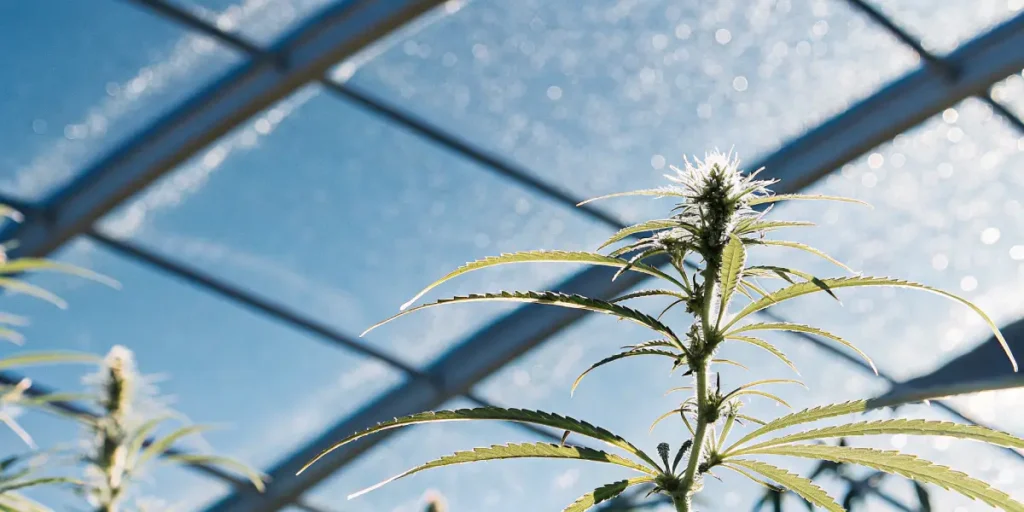
FAQs
How does abscisic acid help cannabis during drought?
Abscisic acid helps cannabis during drought by signaling the plant to conserve water. When drought conditions occur, ABA levels increase, prompting the plant to close its stomata. This reduces water loss and helps the plant maintain its internal moisture balance.
Additionally, ABA influences the plant’s growth patterns, directing energy towards essential functions rather than expansion. This ensures that the plant can survive with less water, maintaining its health and potential for a quality yield even under challenging conditions.
The hormone’s role extends to the molecular level, where it modulates stress-responsive genes, enhancing the plant’s adaptive capacity. This modulation is crucial for sustaining vital metabolic processes during prolonged drought periods.
By understanding how abscisic acid aids in drought response, growers can implement practices that naturally enhance its activity, thereby improving the plant’s resilience and ensuring a successful harvest despite adverse weather conditions.
What are the best cannabis strains for drought conditions?
Some of the best cannabis strains for drought conditions include Critical Daddy Purple, Blue Dream, and Gorilla Glue 4 from Blimburn Seeds. These strains are known for their ability to thrive in low-water environments, thanks to effective abscisic acid signaling.
These strains have been bred for resilience, making them excellent choices for growers dealing with inconsistent rainfall or limited irrigation resources. Their genetic makeup allows them to manage water stress effectively, ensuring a robust and productive growth cycle.
Moreover, these strains exhibit strong abscisic acid signaling pathways in drought-stressed cannabis, enhancing their ability to maintain physiological balance during water scarcity. This trait is especially beneficial in regions with unpredictable weather patterns.
Choosing strains with proven drought tolerance not only contributes to crop sustainability but also optimizes the quality and potency of the yield, making them a valuable addition to any cultivation strategy focused on efficiency and resource conservation.
Can growers enhance abscisic acid signaling in cannabis?
Yes, growers can enhance abscisic acid signaling in cannabis by optimizing growing conditions. This includes selecting drought-resistant strains, managing irrigation carefully, and using soil amendments that support ABA activity.
By focusing on these areas, growers can encourage the plant’s natural defenses against drought. This approach not only aids survival but also improves the overall quality and yield of the cannabis crop, making it a smart strategy for any cultivation setup.
Implementing stress management practices, such as gradually exposing plants to mild drought conditions, can also prime the abscisic acid signaling pathways in cannabis under drought. This technique enhances the plant’s readiness to cope with more severe stress events.
Additionally, integrating advanced monitoring systems can provide real-time data on plant responses, allowing for timely interventions that align with the natural rhythms of ABA activity. This proactive management ensures healthier and more resilient cannabis plants.
What are some signs of abscisic acid activity in cannabis?
Signs of abscisic acid activity in cannabis include leaf curling, reduced growth rates, and a shift in energy allocation towards maintaining essential functions. These are natural responses to increased ABA levels during drought conditions.
Observing these signs can help growers adjust their care practices, ensuring that plants receive the support they need to thrive. By understanding ABA activity, cultivators can make informed decisions about watering schedules and nutrient management.
Other indicators of abscisic acid signaling in cannabis under drought may include increased root-to-shoot ratios and the presence of thicker leaf cuticles, both of which contribute to enhanced drought adaptation.
Recognizing these physiological changes enables growers to tailor their cultivation techniques, fostering an environment that supports the plant’s innate ability to withstand water-limited conditions effectively.
How do environmental conditions affect abscisic acid levels?
Environmental conditions, particularly water availability, have a significant impact on abscisic acid levels in cannabis. As drought conditions set in, ABA levels rise, triggering responses that help the plant conserve water.
Temperature and humidity also play roles. High temperatures can exacerbate water stress, influencing ABA activity. By managing these environmental factors, growers can help stabilize ABA levels, supporting optimal plant health and productivity.
Moreover, fluctuations in light intensity can also affect abscisic acid signaling pathways in drought-stressed cannabis. Lower light levels may reduce transpiration rates, indirectly modulating ABA concentrations within the plant.
By carefully controlling environmental variables, growers can create conditions that favor the natural abscisic acid role in cannabis drought response, thus promoting a more resilient and productive crop.

